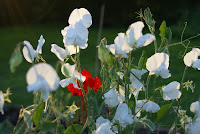Every year around Christmas time we go out and cut a clump of full, glossy green, berry laden branches from our holly trees or bushes and use them for decoration during the holiday, a tradition which has been traced back as far as Roman times. But for most of the rest the year poor old holly is forgotten with the arrival of spring blossoms and the summer blooms.
The word Holly is derived from the old English holegn and was popular even sacred in many early cultures, the pagans used it in some of the rituals while the druids believed it had mystical properties while others thought it was even magical.
The holly also has many uses, here are just a few:
1.The white wood from th Holly tree is commonly used for the white pieces on a chess board.
2.The leaves of some species of Holly are used in the making of herbal teas and are well know for their high caffeine content.
3.The berries are not for human consumption but are of course are enjoyed by feathered friends in the garden. Once the tree has matured some birds might even be able to build their nest and hatch their eggs under the protection of those fierce thorns.
Finally there are many varieties of holly as I mentioned before the most popular being the Variegated holly and the popular highclere variety.
Variegated holly, which is often though not always, less prickly than the native tree, looks great when used as backing for your flower displays. It's long lasting, particularly when used with an oasis and provides the perfect backing for most flowers colors, but especially strong reds or oranges. Not forgetting the Christmas decorations, wreaths or other displays where we use a mixture of the dark, red berried holly with some of the variegated variety weaved in between. Always wear your gloves when taking snippets as you'll have to reach in to the tree to get branches of any length.
Holly Tree (Ilex aquifolium)
One beautiful tree out the back of the garden is a particularly hardy specimen, a native plant it grew up slowly through our thick hedge without almost any assistance to become this fine tree. It's red berries last longest in our garden, from November right through to late February or early March. We thought that as the plant's leaves were extensively armed with sharp thorns that it hindered the birds from getting to the berries, but that is not the case. It seems that the berries are quite hard and the birds prefer to wait until late winter, after the berries have endured a few hard frosts followed by a thaw, they are rendered softer and more agreeable to the wildlife.The word Holly is derived from the old English holegn and was popular even sacred in many early cultures, the pagans used it in some of the rituals while the druids believed it had mystical properties while others thought it was even magical.
The holly also has many uses, here are just a few:
1.The white wood from th Holly tree is commonly used for the white pieces on a chess board.
2.The leaves of some species of Holly are used in the making of herbal teas and are well know for their high caffeine content.
3.The berries are not for human consumption but are of course are enjoyed by feathered friends in the garden. Once the tree has matured some birds might even be able to build their nest and hatch their eggs under the protection of those fierce thorns.
Finally there are many varieties of holly as I mentioned before the most popular being the Variegated holly and the popular highclere variety.
Variegated holly, which is often though not always, less prickly than the native tree, looks great when used as backing for your flower displays. It's long lasting, particularly when used with an oasis and provides the perfect backing for most flowers colors, but especially strong reds or oranges. Not forgetting the Christmas decorations, wreaths or other displays where we use a mixture of the dark, red berried holly with some of the variegated variety weaved in between. Always wear your gloves when taking snippets as you'll have to reach in to the tree to get branches of any length.
Next time the turn of the cotoneaster






















